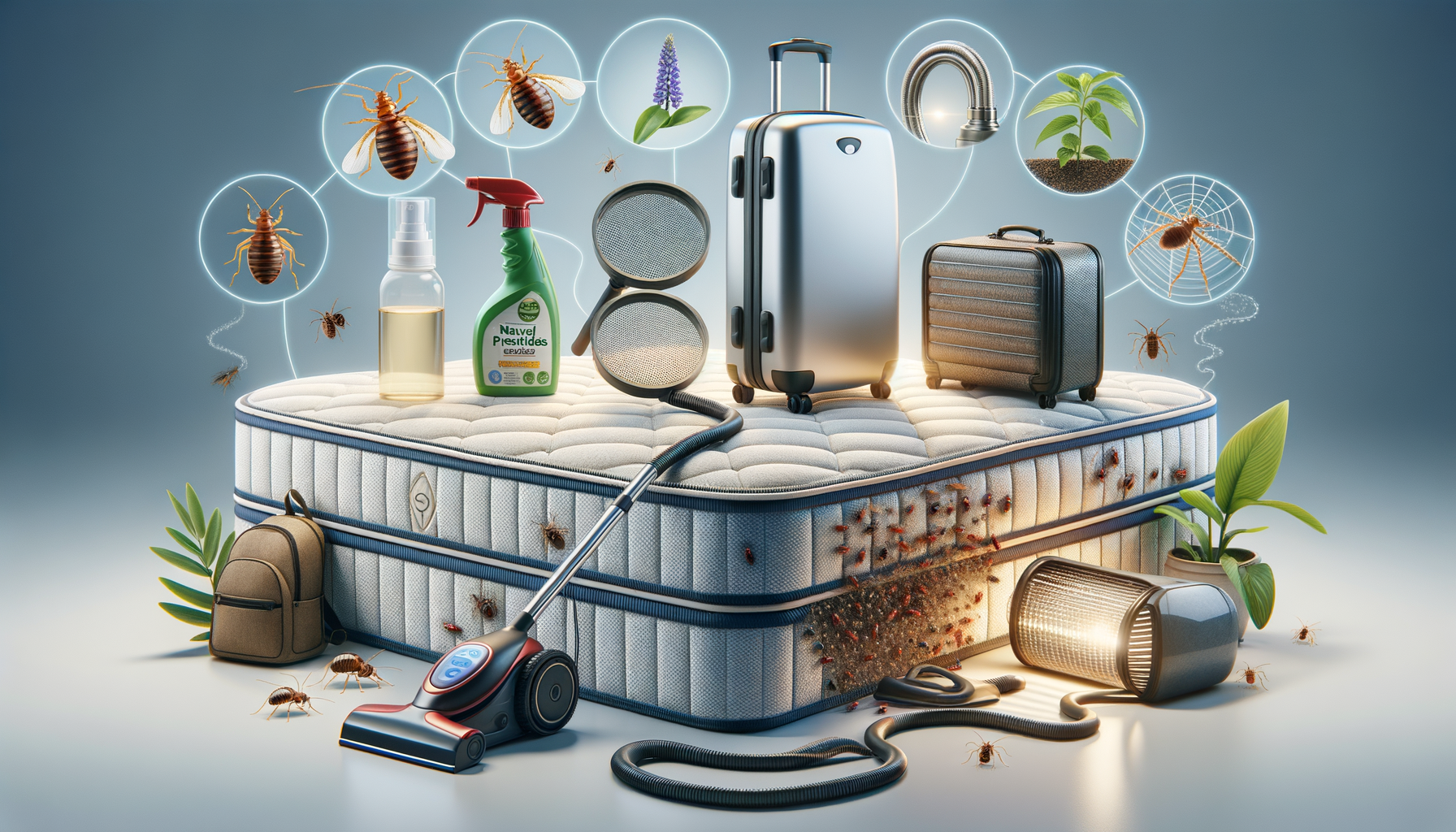5 Effective Strategies for Bed Bug Control
Discover effective strategies to control bed bugs and reclaim your home.

Introduction to Bed Bug Control
Bed bugs are a persistent problem for many households, causing discomfort and distress. These tiny pests can infiltrate homes through luggage, clothing, or second-hand furniture, making them a common issue in urban environments. Understanding effective strategies for bed bug control is essential for maintaining a healthy and comfortable living space. This article explores five strategies that can help you tackle bed bug infestations effectively, ensuring peace of mind and a bug-free home.
Identifying Bed Bug Infestations
Before implementing control measures, it is crucial to identify the presence of bed bugs. These pests are small, reddish-brown insects that feed on human blood, primarily during the night. Common signs of an infestation include:
- Rusty or reddish stains on bed sheets or mattresses caused by crushed bugs.
- Small dark spots, which are bed bug excrement, on bedding or walls.
- Eggs and eggshells, which are tiny and pale yellow.
- Live bed bugs, which are often found in mattress seams, box springs, or crevices.
Early detection is key to preventing a widespread infestation. Regularly inspecting sleeping areas and surrounding furniture can help catch these pests before they multiply. Once identified, swift action is necessary to prevent them from spreading further.
Non-Chemical Control Methods
Non-chemical control methods are a safe and effective way to manage bed bug infestations, especially for those concerned about the use of pesticides in their homes. Some of these methods include:
- Heat Treatment: Bed bugs cannot survive high temperatures. Washing and drying bedding and clothing at high temperatures can effectively kill these pests and their eggs.
- Vacuuming: Regular vacuuming of mattresses, bed frames, and nearby furniture can remove bed bugs and their eggs. It is important to dispose of the vacuum bag or contents immediately after use to prevent re-infestation.
- Encasements: Using mattress and box spring encasements can trap bed bugs and prevent them from accessing hiding spots, ultimately starving them over time.
These methods are most effective when used in combination and as part of an integrated pest management approach.
Chemical Control Options
When non-chemical methods are insufficient, chemical control options may be necessary. It is important to use these treatments responsibly and according to label instructions to ensure safety and effectiveness. Some common chemical treatments include:
- Insecticides: There are various insecticides available specifically for bed bugs. These can be applied to cracks, crevices, and other hiding spots. It is crucial to follow the manufacturer’s instructions carefully to avoid any health risks.
- Desiccant Dusts: These are powders that can be applied to areas where bed bugs are present. They work by dehydrating the insects, leading to their death.
- Pesticide Sprays: These sprays can be used on surfaces where bed bugs are likely to hide. They should be used with caution, especially in areas where children and pets are present.
Professional pest control services may also be considered for severe infestations, as they have access to more potent treatments and expertise in handling these pests.
Preventing Future Infestations
Prevention is an essential aspect of bed bug control. Implementing preventive measures can significantly reduce the risk of future infestations. Some effective strategies include:
- Regular Inspections: Frequently inspect your home, especially after traveling or purchasing second-hand items.
- Protective Covers: Use protective covers on mattresses and box springs to prevent bed bugs from settling in.
- Decluttering: Reducing clutter in your home minimizes hiding spots for bed bugs and makes inspections easier.
- Travel Precautions: When traveling, inspect hotel rooms for signs of bed bugs and keep luggage elevated and away from beds.
By maintaining vigilance and implementing these preventive measures, you can protect your home from bed bugs and ensure a comfortable living environment.
Conclusion: Reclaiming Your Home
Bed bug control requires a comprehensive approach that combines identification, non-chemical and chemical treatments, and preventive measures. By understanding and implementing these strategies, you can effectively manage and prevent infestations, ensuring your home remains a safe and comfortable haven. Remember, early detection and action are key to successfully controlling bed bugs and reclaiming your living space.